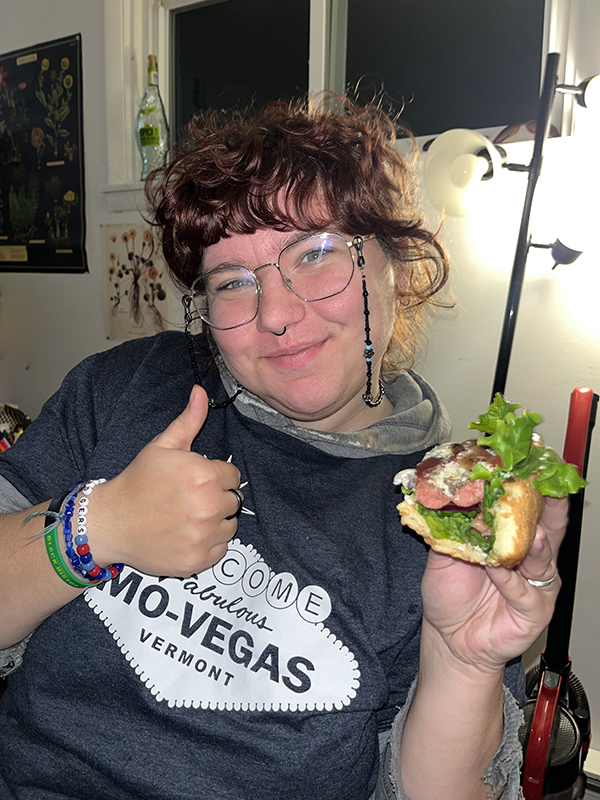Many of us know that most visual art has its superhuman power to sympathize with the highs and lows of giving yourself for your loved ones – be it through tranquil canoeing expeditions, or quiet camping days. We, as a human race, have been gifted with the obligation to find people who will accept and support us, and mold themselves into our hearts for the better of our survival.
Now a pair of artists have illustrated this.
In 2018, Kevin Donegan (he/him) and Susan Smereka (she/her) met as individual artists during an exhibition titled the same as the pair’s current show: Fluid Dynamics. Fast forwarding to August 26 of this year, thus began Donegan and Smereka’s first collaboration, which was launched at the Julian Scott Memorial Gallery.
New venue, same narrative.
Cultivating a wide-spread scene on deconstructed oceanic tableaus with their own individual meanings, Donegan and Smereka have presented multi-media pieces that place a new lens on the complexities of human connections and how they fluctuate. Most of these pieces, according to Donegan and Smereka, also stand as the physical aftermath of their distinct artistic identities and methods of creation. But the most essential origin behind the making of their collection is Smereka’s signature quarter-almond shape.
“How this particular collaboration got going is that Kevin proposed that he would start using my shape,” said Smereka. “And so that was the beginning.”
While the physical attributes of most pieces remain independent within their styles, Smereka’s thought-provoking spirit can be found within the confines of Donegan’s work, as Donegan’s artistic spirit is represented in Smereka’s work. Overall, viewers of the exhibit can conclude that the partners have manifested the influence of one another throughout the artistic process.
“So often we will be working in the same room, and we can not talk for hours at a time while we’re working,” said Donegan, “But, when you’re around somebody, and somebody’s artwork, day in, day out, there’s just a subtle way in which, subconsciously, it starts to become part of our thought process.”
Donegan and Smereka are the ultimate connoisseurs of cultivating rebirth in the “discarded,” when it comes to sourcing materials, as well as preserving the beauty that can be found within the junk aesthetic. To better guide his own practice outside of public exhibitions, Donegan often finds materials during walks, some of them amongst the beach, where he collected most of the yarn seen in a few of the sculptures.
“Sometimes, I have these epiphanies where I encounter something and I’m swept off my feet,” said Donegan. “And then it takes me in a direction that I never would have got to alone in my studio.”
Smereka, on the other side of separate dynamics, had been archiving old family photographs and letters for eight years – most of which can also be found in four buoys in the exhibit.
“I think about transforming them and bringing them into a different place,” said Smereka. “I think about it on an energetic level as well, that by changing these pieces of my life, I’m changing my chemistry.”
Residing up front of the immersive sea of sculptural pieces hangs a split-open canoe laden with fish gill cut pieces of fabric cascading downward from top to bottom.
Of the twenty-eight pieces present within the confines of the gallery, the partnership agrees that this piece, resembling far from a simple canoe, is indicative of connections to the “water within us and without us,” said Donegan.
Located in South Burlington, Donegan and Smereka’s New New Art Studio holds responsibility for having driven their creativity forward. While mainly used as a private studio space, the New New Art Studio also acts as a live teaching venue where Smereka holds a variety of workshops and private lessons.
For those eager to get a curious taste of more of their artistry, Donegan and Smereka will be debuting another collaborative show this coming October at the Towle Hill Studio, in East Corinth. Specific dates and times to be announced.
Fluid Dynamics will continue to be on display on campus at the Julian Scott Memorial Gallery until October 4.









Susan Smereka • Oct 17, 2024 at 1:38 pm
Thanks for a thoughtful review!